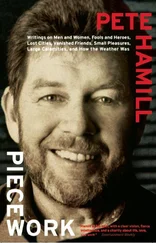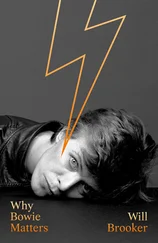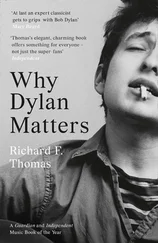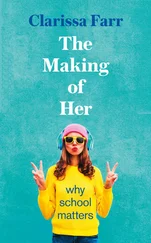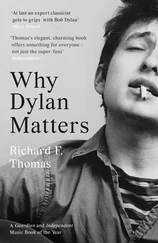“I’d go to the movies, and hear the leading man speaking English — not just Cary Grant, but Clark Gable and all the other guys — and I knew that my friends and I were talking some other version of the language,” he said once. “So I started becoming, in some strange way, bilingual. I talked one kind of English with my friends. Alone in my room, I’d keep practicing the other kind of English.”
His taste in music was formed early. He grew up listening to and memorizing the words and music of the great popular composers and lyricists of the first forty years of the twentieth century. These included Jerome Kern, Rodgers and Hart, Cole Porter, Harold Arlen, and Johnny Mercer, to mention only a few of this extraordinary generation. Many were themselves part of the immigrant saga. Arthur Schwartz was the grandson of a buttonmaker from Russia. Harry Warren was the child of immigrants from Italy. Yip Harburg’s parents were from Russia. Irving Berlin, author of “God Bless America” and a thousand other tunes, was himself an immigrant from Siberia. All were very American, creators of most of those songs that became known as the “standards” of twentieth-century American music.
As the reigning citizens of Tin Pan Alley, they wrote music for the Broadway theater. They wrote for musical revues. They wrote for the movies. Above all, they were city people, and their audiences were composed of city people. Often building on forms derived from African American rhythms, adapting European melodic structures and harmonies, the best of their music was full of wit, regret, insouciance, and sly humor. During Prohibition the music celebrated good times and a sophisticated hedonism, becoming the unrecorded sound track of the speakeasies. When the Depression hit, there was a chastened undertone to the music, a feeling of rue (as there was in the late writing of Scott Fitzgerald). Some writers were capable of biting social commentary, as in Harburg’s “Brother, Can You Spare a Dime?” Most of the time, the attitude was less direct. Perhaps the apocalypse was here, the songs declared; if so, let’s dance. That music was absorbed by the men and women of an entire generation. Sinatra was one of them, but he had begun to hear the music in a new way.
He heard it through the diverse filters of the streets of Hoboken, his own childhood, his personal solitude, and above all through the masculine street codes forged in the years of Prohibition. When the Noble Experiment ended on December 5, 1933, Americans didn’t revert in the morning to the kind of people they were before Prohibition started; they had emerged from the era a lot more cynical and a lot tougher, qualities that would get many of them through the Depression. Sinatra applied some of those attitudes to his music.
If love lyrics were too mushy, he could sing them and make wised-up fun of the mush, and still, in some part of the self, acknowledge that there was some truth to the words. He could be tender and still be a tough guy. Ruth Etting could sing her weepy torch songs, but for men, whining or self-pity was not allowed; they were forbidden by the male codes of the city. Sinatra slowly found a way to allow tenderness into the performance while remaining manly. When he finally took command of his own career, he perfected the role of the Tender Tough Guy and passed it on to several generations of Americans. Before him, that archetype did not exist in American popular culture. That is one reason why he continues to matter; Frank Sinatra created a new model for American masculinity.
Sinatra was not, of course, a jazz singer, but his process resembled the way many jazz musicians worked. The best of them listened creatively to the tunes of Tin Pan Alley but heard them through the filter of their own experience, which was dominated by being black in segregated America. They transformed those songs, edited them, reinvented them, found something of value in even the most banal tunes. The instrument didn’t matter. Over the years Louis Armstrong and Miles Davis found something different in the same tunes; so did Clifford Brown and Dizzy Gillespie, Lester Young and Ben Webster, Coleman Hawkins and Dexter Gordon. They understood the specific lyrics of what had become known as American standards and the general intentions of the songs; they insisted on making them more interesting as music, more authentic, more personal, finding a subtle core that more closely resembled the blues. The results could be entertainment, a transient diversion from the hardness of life; but the songs could be art, too, digging deep into human pain and folly. They could also be both. But these musicians approached the music with a seriousness that was pure. Sinatra worked in a similar way. He didn’t play trumpet, trombone, saxophone, or piano; he rarely composed music or wrote lyrics; but he did function as a musician.
“I discovered very early that my instrument wasn’t my voice,” he said to me once. “It was the microphone.”
II . In the tradition of the Old Country, Frank Sinatra served a long apprenticeship. He seems to have conceived the notion of being a professional singer when he was fifteen. Again, the instinct to create legend or myth obscures the facts, and not even Sinatra was a reliable witness to his own beginnings, and he knew it.
“Sometimes I think I know what it all was about, and how everything happened,” he said one rainy night in New York. “But then I shake my head and wonder. Am I remembering what really happened or what other people think happened? Who the hell knows, after a certain point?”
One thing that really happened was the discovery that he actually did have a voice and could sing. I reminded him once of the story that Rocky Marciano, the old undefeated heavyweight champion, used to tell. He said that when he first knocked out a man in a gymnasium when he was a kid, it was like discovering he could sing opera.
“Hey,” Sinatra said, “when I first realized I could sing a song, I felt like I’d just knocked out Jack Dempsey.”
But in Hoboken in 1930 there were dozens of young men (and surely a few women) who could sing well. They could carry a tune. They could remember the words. Few of them thought they could become stars. That required an act of the imagination, the kind of gleaming vision that is often unique to artists, along with the type of will that is sometimes mistaken for arrogance. Above all, it took guts. To walk out of the safety of the parish is never easy; to do so during the Depression was an act of either foolishness or courage. And yet a small number of people chose to go out and try to make it in America, no matter what the odds against them.
“There really was nothing to lose,” Sinatra said later. “Yes, you might fall on your ass. But so what? You could always work on the docks or tend bar. What was important was to try .”
The lure of big-time success was underlined by the grinding horrors of the Depression. Crime was one way out; with audacity and a gun, a kid might become a big shot. But talent was another. By the early 1930s the radio and the phonograph record, along with sound movies, were creating the first national pop singing stars. One was Russ Columbo, who had a light operatic voice and made an immense hit of “Prisoner of Love.” He showed that an Italian American could be accepted beyond the boundaries of the parish, but his career was cut short in 1934 by his accidental death while cleaning an antique pistol. Rudy Vallee was another early star. But his voice was light and tremulous, he looked a bit goofy, and in personal appearances he used a megaphone; he couldn’t play college sophomores forever. In the cities of the Northeast there weren’t many college sophomores to identify with him anyway. Certainly kids like Frank Sinatra never wanted to grow up to be Rudy Vallee. But Bing Crosby was an altogether different model.
Читать дальше



